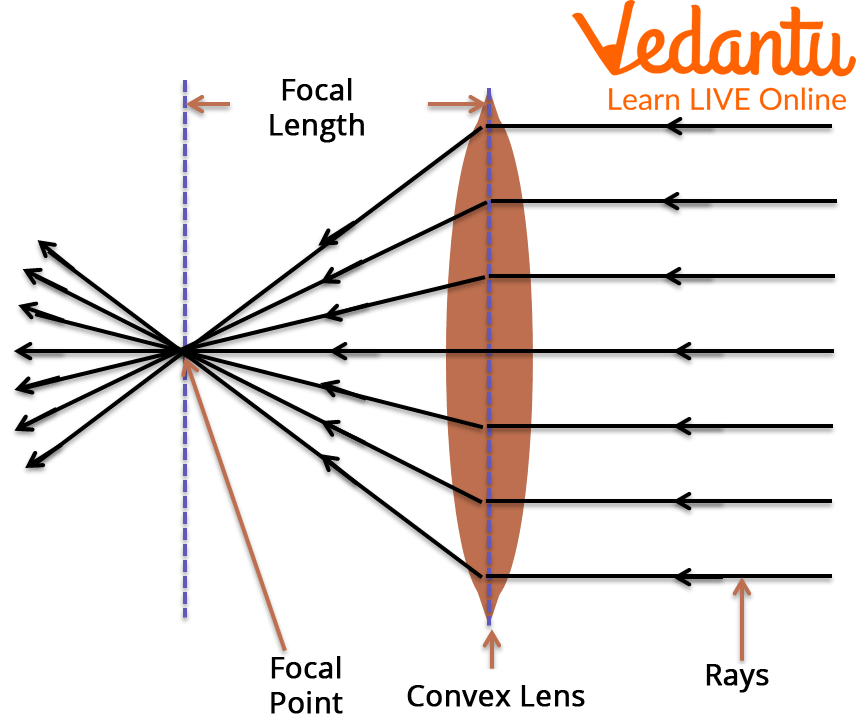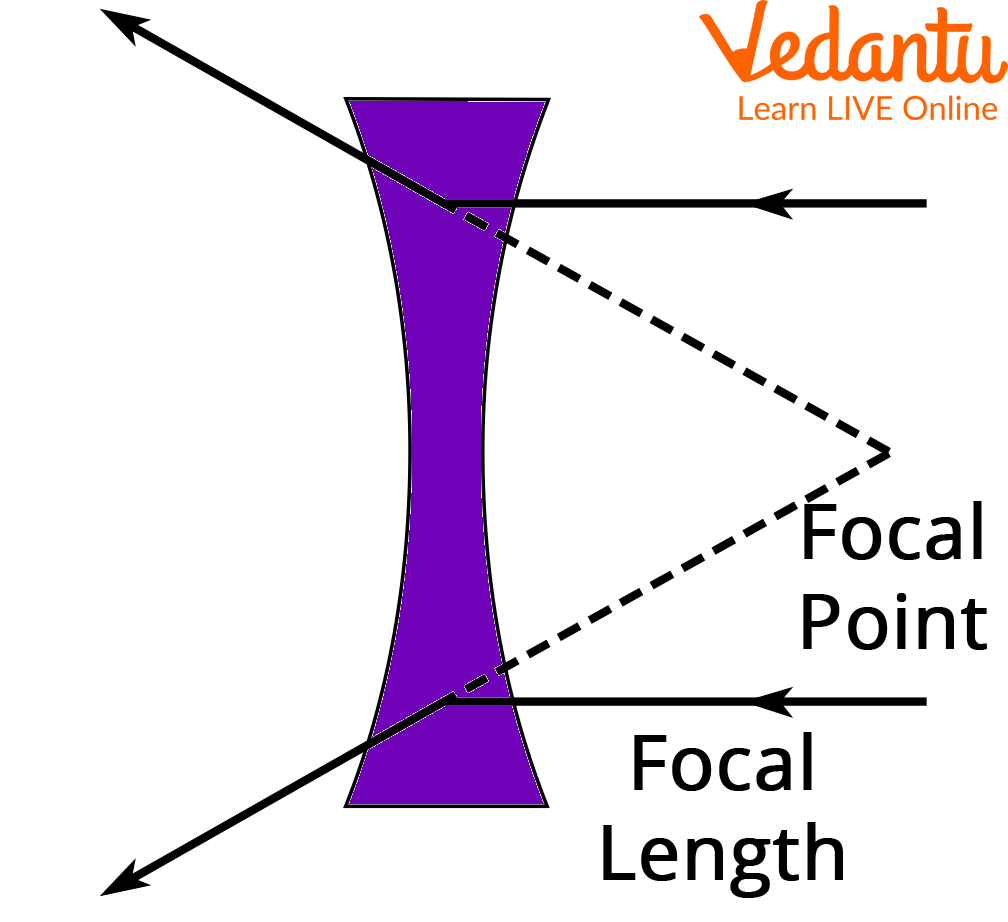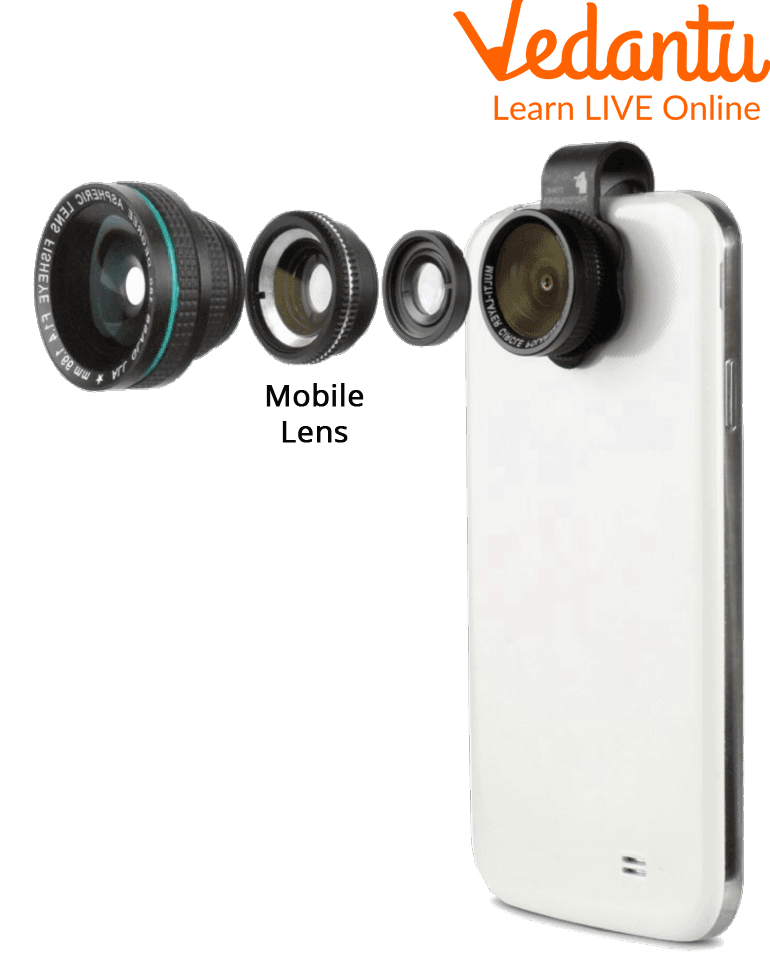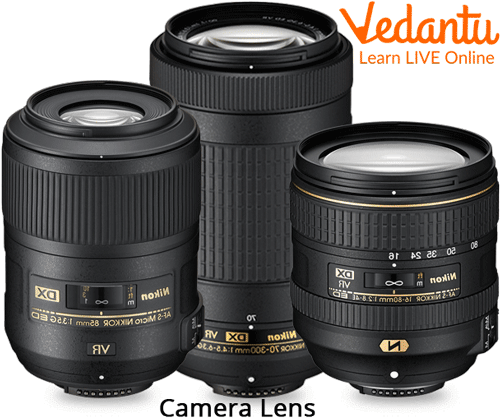




How Do Convex and Concave Lenses Differ? Explained for Students
There are two sides to a lens, one of which is curved, and the other is flat. Circular shapes are most common. Bending light is done with lenses.
A lens distorts the image of an object, making it appear larger or smaller than it really is. Among other things, lenses bend light in useful ways in instruments such as telescopes, binoculars, microscopes, cameras, and eyeglasses.
Lenses are transparent pieces of glass or plastic with at least one curved surface that can be used to control light (some are only mirrors). You should not be confused by its name since it derives from Latin. A convex lens is the most common type of lens, and resembles a lentil, so this may have something to do with it.
What is the Process of Making Lenses?
As light rays pass through a lens, they bend, changing their direction as they do so. Thus, objects seen through a lens appear bigger or smaller than they really are because the rays seem to come from closer or farther away.
An Overview of Lens Types
Convex lenses (or converging lenses) and concave lenses (or diverging lenses) are the two most common types of lenses.
1. Convex Lenses:
It has the classic lentil shape as it bulges outwards in the centre of the lens (sometimes called a positive lens). The focal point of a convex lens is determined by bending rays of light passing through the lens inward, resulting in the rays meeting quickly in the focal spot. CONVEX or POSITIVE lenses focus light and can form images.

Convex Lens
2. Concave Lenses
A hollow lens is exactly the contrary with the external shells curving inward, so it makes resemblant light shafts curve outward or diverge. That is why hollow lenses are occasionally called diverging lenses. (One easy way to flashback the difference between concave and convex lenses is to suppose concave lenses caving inwards.) CONCAVE or NEGATIVE lenses will DIVERGE (spread out) light shafts

Concave Lens
3. Emulsion Lenses
It's possible to make lenses that bear in more complex ways by combining convex and concave lenses. A lens that uses two or further simpler lenses in this way is called an emulsion lens.
Difference Between Concave and Convex Lenses
A hollow lens angles inward. The middle of it is thinner than the edges, so it has a thicker middle. When light passes through a hollow lens, the light shafts bend so that they spread piecemeal. hollow lenses make objects look lower than they really are.
A convex lens angles outward.
How are Lenses Made?
Until plastics came common in the 20th century, nearly all lenses were made by grinding solid pieces of glass into different shapes. Convex lenses were made by using a concave-shaped grinding tool( and vice-versa), and also the roughly shaped lens was polished to make its final shape.
The Lens of the Eye
The eye contains a lens that bends light shafts so that they meet exactly on a part of the eye known as the retina. However, the result is hypermetropia or vision, If the lens doesn't bend light shafts duly. Hypermetropia makes away effects look vague. vision makes close-up effects look vague. The lenses of both types of eyeglasses bend light shafts so that they meet on the retina.
Simple or Complex Lenses?
Simple lenses can not form veritably sharp images, so lens controversy or optic masterminds figure out how to combine the simple types to make complex lenses that work more. We use special computer programs to help us do this because it can make BILLIONS and BILLIONS of computations.
These biases use these types of lenses. Can you guess what they are?

Mobile Lens

Camera Lens
Magnifying Glass: A Simple Optic Device

Lens with Virtual Image
This illustration shows how a magnifying glass bends light shafts to make effects look bigger than they are. numerous optic biases use the same introductory idea of bending the light to wisecrack your eye and brain so light LOOKS like it came from a different (generally larger or near) object.
Summary
In summary, we can say that convex lenses can form images for various locations of objects and concave lenses can create images for different points of view.
Furthermore, we can justify the use of particular lenses in such instruments as telescopes, microscopes, etc., based on the images they form. Various uses of lenses are described in the article like convex lenses used in a microscope, magnifying glasses, camera, correction of hypermetropia, etc.
FAQs on Types of Lenses in Physics: Definition, Properties & Applications
1. What is a lens in the context of physics?
In physics, a lens is a transmissive optical device, typically made of glass or plastic, with two curved surfaces or one curved and one flat surface. Its primary function is to converge or diverge light rays through the principle of refraction. Lenses manipulate the path of light to form an image of an object, which can be magnified, minified, real, or virtual depending on the lens type and object position.
2. What are the two primary types of lenses based on their shape and function?
The two primary types of lenses are:
- Convex Lens (Converging Lens): This lens is thicker at the centre and thinner at the edges. It bends parallel light rays inward to a single point known as the principal focus.
- Concave Lens (Diverging Lens): This lens is thinner at the centre and thicker at the edges. It spreads out (diverges) parallel light rays, making them appear to originate from a single point behind the lens.
3. What is the key difference between how a convex and a concave lens forms an image?
The key difference lies in the nature of the images they typically form. A convex lens can form both real, inverted images (when the object is placed beyond the focal length) and virtual, erect images (when the object is placed within the focal length). In contrast, a concave lens always forms a virtual, erect, and diminished image, regardless of the object's position.
4. How are convex and concave lenses further classified based on their surfaces?
Both convex and concave lenses can be classified into three sub-types based on the curvature of their two surfaces:
- Types of Convex Lenses:
- Biconvex: Curved outwards on both sides.
- Plano-convex: Flat on one side and curved outwards on the other.
- Concavo-convex: Curved outwards on one side and curved inwards on the other, but thicker at the centre.
- Types of Concave Lenses:
- Biconcave: Curved inwards on both sides.
- Plano-concave: Flat on one side and curved inwards on the other.
- Convexo-concave: Curved inwards on one side and curved outwards on the other, but thinner at the centre.
5. Why is a convex lens called a 'converging' lens and a concave lens a 'diverging' lens?
This terminology describes their effect on a parallel beam of light. A convex lens has a shape that causes parallel light rays passing through it to bend inward and meet at a single point (the focus). This action of bringing rays together is called convergence. Conversely, the shape of a concave lens causes parallel rays to bend outward and spread apart as if they are coming from a single point behind the lens. This action of spreading rays out is called divergence.
6. What are some common real-world applications of convex and concave lenses?
Lenses are essential in many optical instruments:
- Convex lenses are used in magnifying glasses, cameras, projectors, and microscopes. They are also used in eyeglasses to correct hypermetropia (long-sightedness).
- Concave lenses are used in peepholes of doors, flashlights to spread light, and in combination with convex lenses in telescopes. They are primarily used in eyeglasses to correct myopia (short-sightedness).
7. How does the Lens Maker's Formula relate a lens's physical properties to its focal length?
The Lens Maker's Formula is a crucial equation in optics, primarily studied in CBSE Class 12, that connects the focal length (f) of a lens to its physical characteristics. The formula is 1/f = (μ - 1) * [1/R₁ - 1/R₂], where 'μ' is the refractive index of the lens material with respect to the surrounding medium, and R₁ and R₂ are the radii of curvature of its two surfaces. It demonstrates how the focal length is not a fixed property but depends entirely on the material it's made from and the shape of its surfaces.
8. Under what condition can a convex lens produce a virtual image instead of a real one?
A common misconception is that convex lenses only form real images. However, a convex lens can form a virtual, erect, and magnified image under one specific condition: when the object is placed between the optical centre and the principal focus (f) of the lens. This is the principle behind how a simple magnifying glass works, allowing us to see an enlarged image of a small object.





















